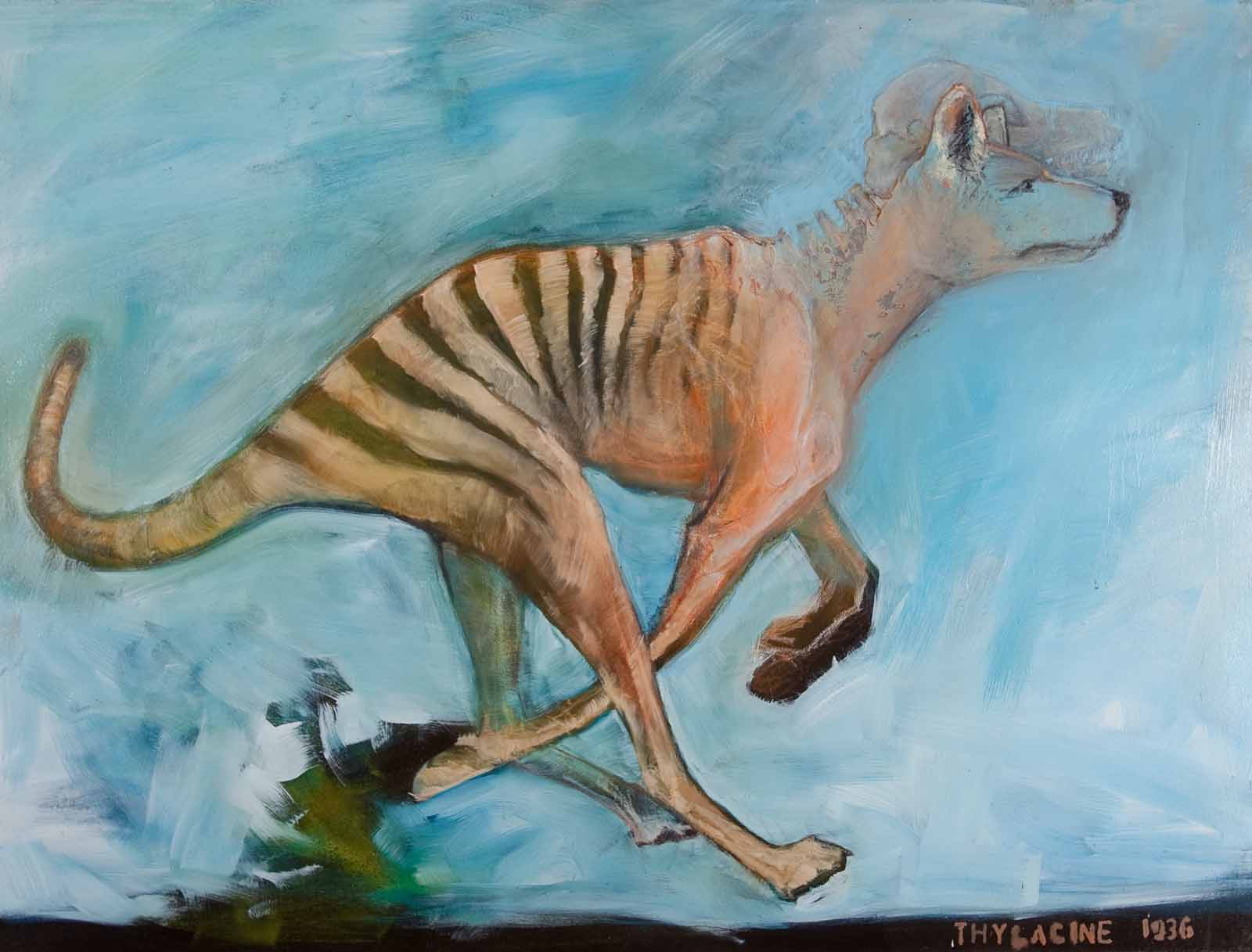
Tasmanian Wolf d.1936
Ellen Litwiller, 2013
Oil on canvas, 36″ x 48″
Image © 2013, courtesy of the artist
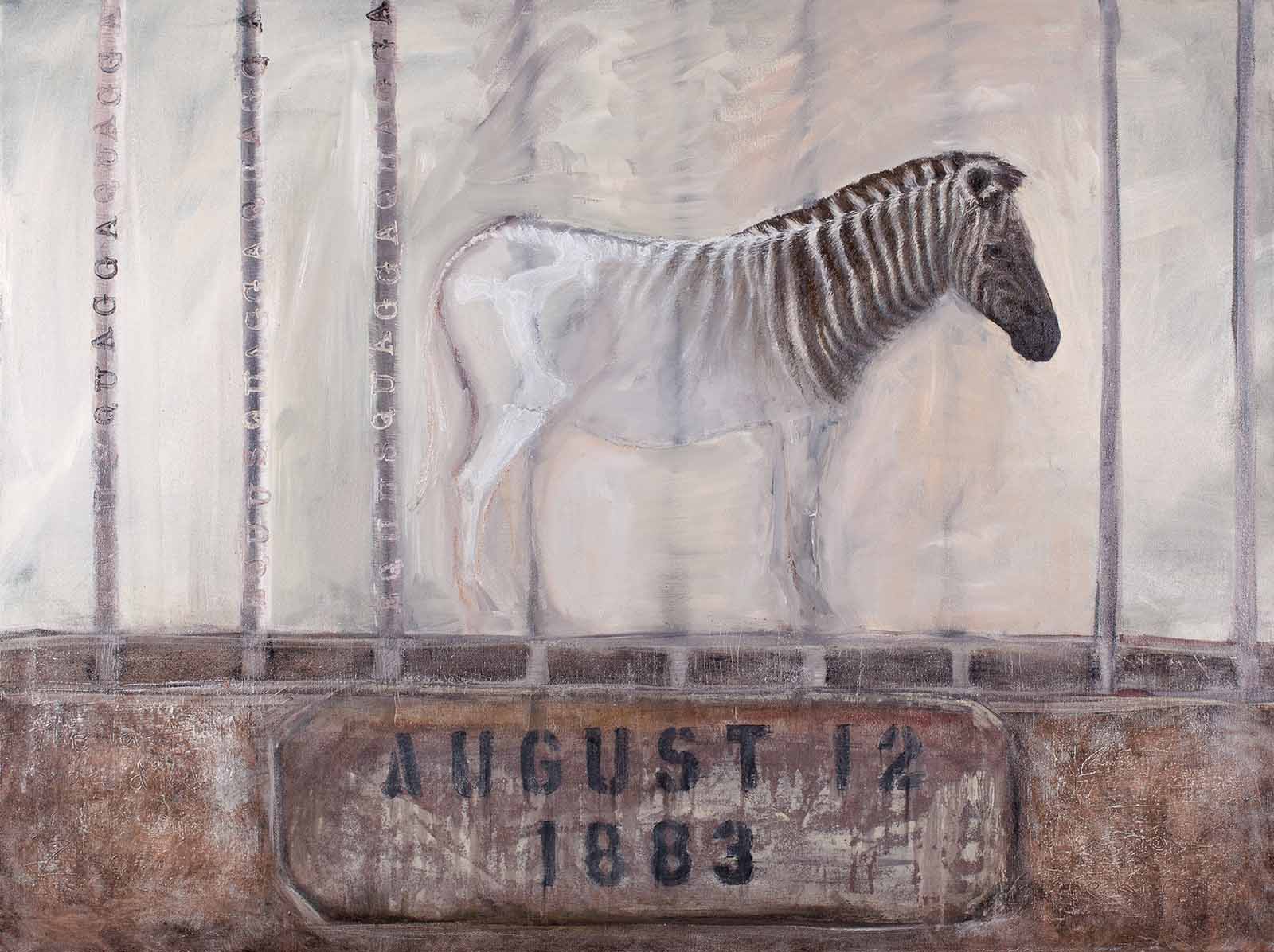
Quagga d.1883
Ellen Litwiller, 2013
Oil on canvas, 40″ x 30″
Image © 2013, courtesy of the artist
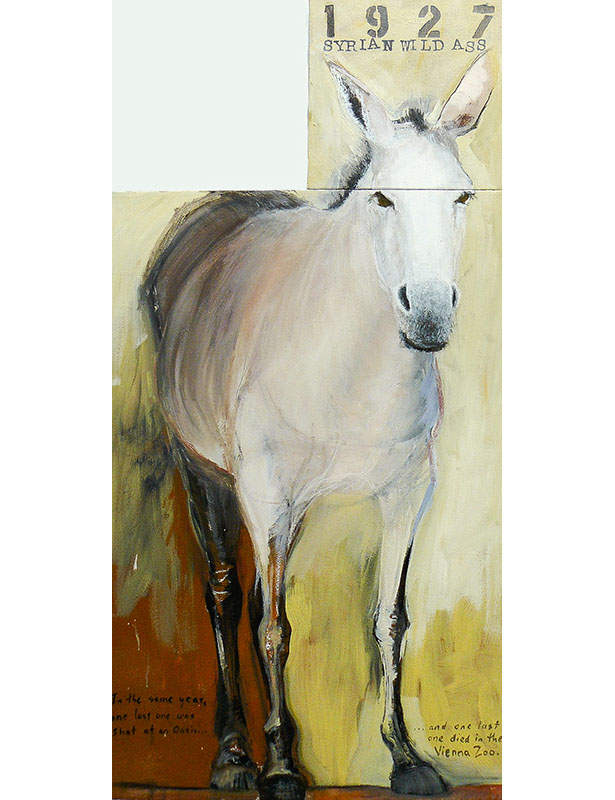
Syrian Wild Ass d.1927
Ellen Litwiller, 2014
Oil on canvas, 48″ x 24″
Image © 2014, courtesy of the artist
About the Artist
In a series of works entitled, “The Last of Their Kind,” Ellen Litwiller presents haunting portraits of the last members of a species now extinct. Using a variety of text elements and brushstrokes, Litwiller marks the date of extinction, melds figures and their skeletons, and scrawls eerie details of their departure. Litwiller crafts these memorials to celebrate the beauty of Earth’s creatures, and leaves us wondering whether we have just met the Ghost of Christmas Yet To Come.
Explore These Artworks
In the artist’s words:
“The Extinction Project is celebrating individuals who were the last of their kind and stimulating dialogue on the human place in nature. As told through their portraits, the stories of these creatures furthers the global conversation regarding the increased rate of extinction and our current biodiversity crisis. I hope to engage viewers in a thoughtful discussion surrounding human actions that lead to extinction of Earth’s species and how we fit within the larger unfolding of the Earth’s future.”
Tasmanian Tiger, Tasmanian Wolf or Thylacine, Thylacinus cynocephalus
The Thylacine was a marsupial found in Australia, New Guinea and Tasmania. Settlers destroyed its habitat to make way for sheep farming. With food scarce, it turned to eating what was available, the sheep. It was declared a nuisance and trapped and killed it to extinction. This creature is an rare example of parallel evolution; given similar environments two species adapted to resemble one another: the Canine and the Thylacine.
Quagga, Equus quagga quagga
The Quagga lived in the southern plains of South Africa. It was hunted for its meat and leather hide. Colonial farmers killed it to preserve the grasslands for domesticated animals. The last one died in captivity August 12, 1883 in the Amsterdam Zoo.
Syrian Wild Ass, Equus hemionus hemippus
The smallest of the Equidae, about 3’ at shoulders, was very fast, and could not be domesticated. Lived in the lands that are now considered Syria, Jordan and Iraq. In 1927 there are two separate accounts of what could be considered the last of this species; one in captivity at the Vienna Zoo, the other one was shot in the wild while it drank from an oasis.
In progress:
Ellen Litwiller is currently working on a series of paintings entitled, “The Wasting.” The works document a plague affecting sea stars along the west coast of North America.
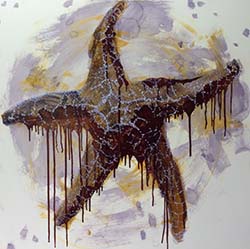
From Global Footprint Network:
Problems such as climate change, water shortages, overharvesting and habitat destruction—symptoms of human pressure on the planet’s finite resources—are driving down wildlife populations worldwide.
From Earth Day Network:
We address poaching in the following excerpt from our blog. You can view the full blog posthere.
Every six hours a rhino is butchered in Africa. This unsettlingly high number puts this species in grave danger of extinction. The number of animals and plants at risk of extinction rose in 2015 despite government pledges to improve protection, with species under threat ranging from lions in West Africa to orchids in Asia. With this widespread issue comes a dying need for change. Fortunately enough, there is a new technological innovation that could help save the animals. Poaching is one of the main reasons these animals are facing extinction.
“We had to find a way to protect these animals effectively in the field—the killing has to be stopped,” said Chester University’s Dr. Paul O’Donoghue, who is also the chief scientific adviser for Protect, in a press release.” A British team has developed a new system to help catch and stop poachers, reported the BBC. With The Real-time Anti-Poaching Intelligence Device (aka RAPID) the heart-rate monitor triggers the alarm the instant a poaching event occurs, pinpointing the location within a few meters so that rangers can be on the scene, via helicopter or truck within minutes, leaving poachers no time to harvest the valuable parts of an animal or make good an escape. Not only is this a new invention, but it’s gaining the popularity and support it needs to make an impact in society. Humane Society International, which is working with the government of Vietnam to reduce demand for rhino horn, has supported the development of the device. Reducing market demand is imperative in protecting these animals and stop the current crisis.
In Part II of this exhibition, we will feature the work of Laura Ball, whose watercolor paintings of “Endlings” depict the last remaining members of a species intertwined with other creatures. Litwiller and Ball approach this subject from a similar perspective, but create works that differ markedly in their aesthetic.
Lonesome George, © 2014 by Laura Ball, courtesy of Morgan Lehman Gallery and the artist
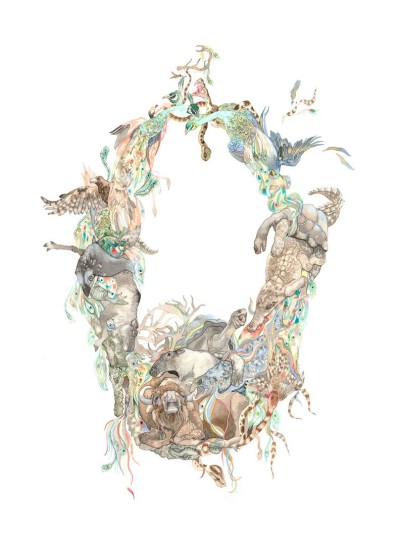
Help preserve woodland habitats for wildlife by avoiding wasteful uses of paper products.
Featured Actions:
* Cut off junk mail! Stop paper statements from banks and other companies. To increase your impact, put a stop to telephone book delivery.
* Stop using virgin paper! Use recycled paper instead. Better yet, reuse the blank side of junk mail and think before you print!
* Your pledge will be counted in Earth Day Network’s “A Billion Acts of Green” campaign. Learn more about this campaignhere.
We feel a profound sadness when we see images or video footage of animals that have become extinct. But are we doing enough in our own lives to prevent further extinction events?
Video footage of the Thylacine:











